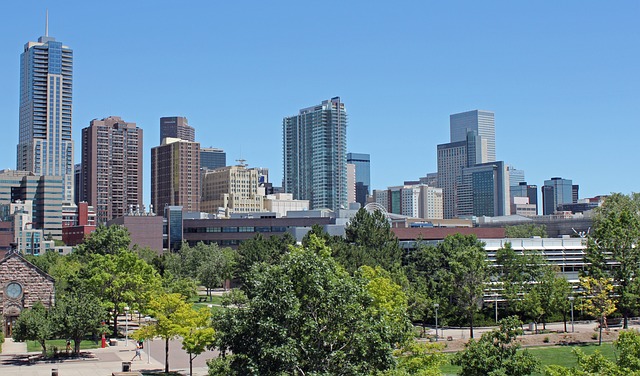In Denver, the presence of asbestos in older homes and buildings poses a significant health risk, particularly during renovation or demolition. The city's industrial history has led to many structures containing this hazardous material. It is crucial for residents and property owners to engage with professional Asbestos Removal Denver services to handle the safe removal and disposal of asbestos-containing materials such as insulation, flooring, and ceiling tiles. A thorough asbestos inspection is necessary before any construction work to ensure compliance with safety regulations and to protect against the serious health conditions associated with asbestos exposure, including mesothelioma and lung cancer. Asbestos Removal Denver offers expert services that include a detailed assessment of properties, strategic planning, and execution with a focus on occupant and worker safety. Their certified contractors use advanced containment methods and specialized equipment to safely manage the removal process, ensuring strict adherence to regulatory standards for handling, packaging, and labeling asbestos waste. They maintain high air quality standards throughout the operation using sealing and ventilation techniques, and post-remediation, they conduct comprehensive assessments to confirm complete asbestos abatement, securing Denver's buildings and their occupants from the dangers of asbestos exposure.
When confronting asbestos concerns, Denver residents and property owners must navigate a complex landscape of safety protocols and regulations. This comprehensive guide delves into the critical aspects of asbestos removal in Denver, ensuring that you are well-informed on the risks, remediation processes, and compliance measures required to mitigate potential health hazards. From understanding the prevalence of asbestos in Denver homes and buildings to recognizing the best practices for safe abatement and disposal, this article provides a thorough examination of the subject, emphasizing local EPA regulations and the importance of professional testing and inspection services. It also outlines the steps to select a reliable asbestos removal company, ensuring that your property is safely remediated post-removal. With a focus on community health and environmental safety, this article stands as a vital resource for those seeking to manage asbestos effectively in the Denver area.
- Understanding Asbestos Risks in Denver Homes and Buildings
- The Process of Safe Asbestos Removal in Denver
Understanding Asbestos Risks in Denver Homes and Buildings

Residents and property owners in Denver must be cognizant of the asbestos risks present in older homes and buildings, a concern that underscores the necessity for professional Asbestos Removal Denver services. Asbestos, a mineral once ubiquitous in construction materials for its fire-resistant and insulating properties, can pose significant health hazards when its fibers become airborne during renovation, repair, or demolition activities. Given Denver’s history of industrial activity and the presence of structures built before the asbestos ban, it is imperative to identify and mitigate these risks. The city’s older homes, in particular, may contain asbestos-containing materials like insulation, flooring, and ceiling tiles, which, if disturbed, can release dangerous fibers into the environment. Engaging with experienced Asbestos Removal Denver companies is crucial for ensuring safe handling and disposal of these materials, protecting both occupants and workers from potential health issues such as mesothelioma and lung cancer. It’s not just about adhering to regulations; it’s about prioritizing safety in the face of invisible threats. Therefore, when undertaking any construction project in Denver, a thorough asbestos inspection should be conducted first, followed by professional abatement if necessary, provided by the specialized Asbestos Removal Denver experts equipped with the knowledge and tools to manage this hidden danger effectively.
The Process of Safe Asbestos Removal in Denver

In Denver, the process of safe asbestos removal is a critical safety measure due to the potential health risks posed by asbestos fibers. When dealing with asbestos-containing materials (ACMs) in homes or commercial buildings, it is imperative to engage with professional asbestos removal services like those provided in Asbestos Removal Denver. These professionals adhere to stringent protocols to ensure the safe extraction and disposal of asbestos materials. The process begins with a thorough assessment of the property to identify all ACMs, followed by careful planning to execute the removal without contaminating the surrounding environment.
Certified asbestos abatement contractors in Asbestos Removal Denver use specialized equipment and techniques to contain the area, minimize airborne asbestos fibers, and prevent exposure to occupants or workers. They meticulously handle the materials, enclosing them to prevent dust during removal. The debris is then carefully packed and labeled for hazardous waste disposal, ensuring compliance with state and federal regulations. Proper sealing and ventilation measures are implemented throughout the process to maintain air quality. After removal, a post-remediation assessment is conducted to confirm that all asbestos has been safely removed, leaving residents and workers of Denver’s buildings in a safe environment.
Asbestos poses a significant health risk, particularly within older homes and buildings in Denver. The article has outlined the critical steps necessary for safe asbestos removal, ensuring that both residents and professionals handle this hazardous material with the utmost care. When confronted with asbestos-containing materials, it is imperative to engage with certified asbestos removal experts in Denver who follow strict protocols to mitigate any potential exposure. By adhering to these guidelines, the community can safeguard public health and maintain the integrity of Denver’s structures. Remember, professional asbestos removal services are key to protecting your environment and well-being.
